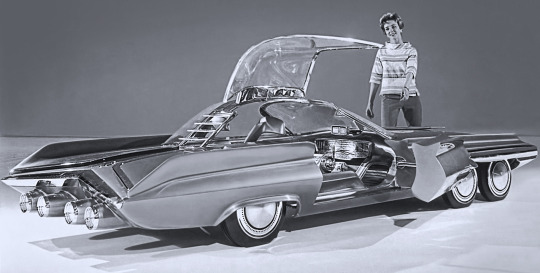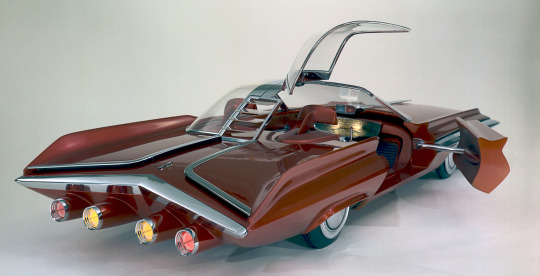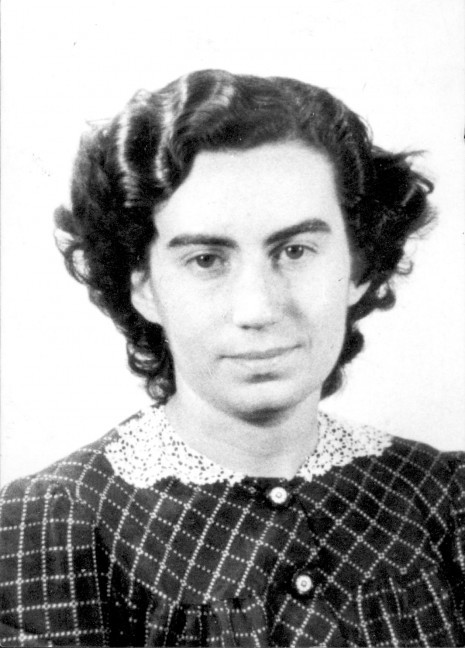#XXI century
Text

Watchers in the Night, by Thomas Blackshear.
#thomas blackshear#watchers#watchers in the night#art#painting#classic art#illustration#traditional illustration#catholic#catholiscism#catholic church#xxi#xxi century#artist#guardian angel#child#children#childhood#god#jesusisgod#jesusislord#jesus#jesus christ#angelic#angel#fire#holy spirit#night#dream
73 notes
·
View notes
Text
Makes a cathedral, him pressing against
me, his lips at my neck, and yes, I do believe
his mouth is heaven, his kisses falling over me
like stars.
Richard Siken, Saying Your Names, in his book 'Crush'.
26 notes
·
View notes
Text

Princess Hirut Desta (also Princess Ruth Desta) was the daughter of Ras Desta Damtew and Princess Tenagnework Haile Selassie, and granddaughter of Emperor Haile Selassie of Ethiopia. She was the widow of General Nega Tegegn, who was governor of the provinces of Begemder and Semien. She was described by Nathaniel T. Kenney as a "trim, most democratic of princesses," who "was not above grabbing a tool from a workman, I suspect, and showing him how to use it."
She was imprisoned by the Derg from 1974 until 1988. Princess Hirut Desta died in London aged 84 in 2014, and her funeral was conducted at the Holy Trinity Cathedral in Addis Ababa.
#Hirut Desta#Ruth Desta#House of Solomon#women in history#african history#ethiopian history#xx century#XXI century#people#portrait#photo#photography#black and white
8 notes
·
View notes
Photo

They say we're lucky as we have freedom of thought and no censorship. This old gruesome post wasn't even in the flagged posts box.
#Iraq War#invasion of Iraq#middle east#War on terror#oil#George W Bush administration#US imperialism#War in Iraq#Obama administration#war on terrorism#Baghdad#civilians#military–industrial complex#US army#children#XXI century#US military interventions#torture#genocide#war crimes#crimes against humanity#manslaughter#murders#kidnapping#human rights violation#Abu Ghraib#shock and awe#Joe Biden#Guantanamo Bay prison#Tony Blair
23 notes
·
View notes
Text
Hasło na dziś: XXI wiek, a wciąż są kolejki do dziekanatu.
(12.09.2017)
#hasło na dziś#hnd#motto of the day#cytat po polsku#cytaty po polsku#polski cytat#xxi wiek#xxi century#dziekanat#studia#uczelnia#uniwersytet
1 note
·
View note
Text

#drawing#art#contemporary art#public toilet#portrait#ink drawing#broken nib#pen and ink#markmaking#inking#drawing practice#modernist interior#fashion#afterparty#virtual reality#hallucinatory#revelation#nonbinary#xxi century#traditional art#digital#print
0 notes
Text
#TuesdayBookBlog THE THIN BLUE-YELLOW LINE BETWEEN LOVE AND HATE: A WAR DIARY FROM UKRAINE by Anton Eine (@AntonEine) , Simon Geoghegan (Translator) #RBRT #Ukraine
#TuesdayBookBlog THE THIN BLUE-YELLOW LINE BETWEEN LOVE AND HATE: A WAR DIARY FROM UKRAINE by Anton Eine (@AntonEine) , Simon Geoghegan (Translator) #RBRT #Ukraine
Hi, all:
I bring you a book that needs no introduction. Not a book I’ll ever forget. Thanks to Rosie and her team for the support.
The Thin Blue-Yellow Line by Anton Eine
The Thin Blue-Yellow Line. Between Love and Hate by Anton Eire (trans.) Simon Geoghegan
A diary chronicling the hopes, pain and fears of ordinary Ukrainians collected during the current war. Frank, emotional and straight…

View On WordPress
0 notes
Text







Ford Seattle-ite XXI (incl brochure), 1962. Presented at the Century 21 Exposition which formed part of the Seattle World’s Fair (hence the name) a scale model theoretically powered by nuclear fusion. Designed by Alex Tremulis who proposed interchangeable power units so the entire front of the car could be removed. The "compact nuclear propulsion devices" would come in economy form offering perhaps 60hp, up to a high-speed transcontinental unit with in excess of 400hp. It also proposed features that did make it into real cars like computerised navigation and fingertip controls
#Ford#concept#retro futuristic#nuclear power#1962#Seattle#Ford Seattle-ite XXI#Seattle World’s Fair#Alex Tremulis#design study#prototype#model#scale model#dream car#Century 21 Exposition
907 notes
·
View notes
Text
Arthur being back from the dead only to decide living sucks when he can't open a candy wrapper for solid 5 minutes while Merlin keeps laughing at him in the bg
#not inspired by real life events believe me#i need a series of arthur struggling with the smallest imaginable inconveniences and just being done with XXI century#merlin bbc#merthur#merlin emrys#arthur pendragon
358 notes
·
View notes
Text
Of course people starts get missing when those two are back
#guess whos back#back again#- XXI's century poet#eminem#dc comics#barbara gordon#dc#batgirl#babs gordon#babs#dc tumblr#batfam#batman#dc oracle#gotham rp#gotham roleplay
31 notes
·
View notes
Text




#the warning#daniela villarreal#paulina villarreal#alejandra villarreal#dany villarreal#pau villarreal#ale villarreal#xxi century blood#queen of the murder scene#error#keep me fed
7 notes
·
View notes
Text
Oh, the things we invent when we are scared
and want to be rescued.
Richard Siken, I Had a Dream About You, in his book 'Crush'.
9 notes
·
View notes
Photo

Teresa Mattei, detta Teresita (Genova, 1º febbraio 1921 – Usigliano, 12 marzo 2013), è stata una partigiana, politica e pedagogista italiana.
Combattente nella formazione garibaldina Fronte della Gioventù (con la qualifica di comandante di compagnia), prese parte all'organizzazione dell'uccisione del filosofo Giovanni Gentile, di cui era stata allieva. Fu anche la più giovane eletta all'Assemblea Costituente, dove assunse l'incarico di segretaria dell'ufficio di presidenza.
Dirigente nazionale dell'Unione Donne Italiane, fu insieme a Teresa Noce e a Rita Montagnana l'inventrice dell'uso della mimosa per l'otto marzo: Luigi Longo le chiese se sarebbe stato opportuno scegliere le violette, come in Francia, per celebrare quel giorno; Teresa Mattei gli suggerì la mimosa, un fiore più povero e diffuso nelle nostre campagne.
#Teresa Mattei#donne nella storia#la storia è donna#partigiani#XX century#XXI century#people#portrait#photo#photography#Black and White
15 notes
·
View notes
Text
" Qualcuno uscí da una tavola calda e cercò di porgergli una bottiglia d’acqua. Era una donna che indossava una mascherina antipolvere e un cappellino con la visiera, e ritrasse la bottiglia e svitò il tappo e quindi gliela tese di nuovo. Lui posò la valigetta per prenderla, a malapena conscio che non stava usando il braccio sinistro, che aveva dovuto posare la valigetta prima di poter prendere la bottiglia. Tre furgoni della polizia svoltarono e si precipitarono verso downtown, a sirene spiegate. Chiuse gli occhi e bevve, e sentí l’acqua scorrergli nel corpo trascinando giú con sé polvere e fuliggine. La donna lo stava fissando. Gli disse qualcosa che lui non sentí, quindi le restituí la bottiglia e raccolse la valigetta. Il lungo sorso d’acqua gli lasciò un retrogusto di sangue.
Riprese a camminare. Un carrello del supermercato giaceva immobile e vuoto. Dietro c’era una donna, girata verso di lui, con del nastro della polizia avvolto intorno alla testa e al viso, di quel nastro giallo con la scritta caution che delimita la scena di un delitto. I suoi occhi erano piccole increspature bianche nella mascherina sgargiante, e lei stringeva la maniglia del carrello e se ne stava lí, a guardare dentro il fumo.
Fece in tempo a udire il suono del secondo crollo. Attraversò Canal Street e cominciò a vedere le cose, per qualche motivo, in modo diverso. Non parevano pregnanti come al solito, le strade lastricate, i fabbricati in ghisa. C’era una qualche mancanza cruciale nelle cose intorno a lui. Erano incompiute, per cosí dire. Erano inosservate, per cosí dire. Forse era quello l’aspetto che avevano le cose quando non c’era nessuno che le vedesse.
Udí il suono del secondo crollo, o lo avvertí nel tremore dell'aria, la torre nord che cadeva, uno sconcerto sommesso di voci in lontananza. La torre nord che crollava era lui.
Il cielo era piú leggero, lí, e riusciva a respirare piú facilmente. C’erano altri dietro di lui, migliaia, che andavano riempiendo la media distanza, una massa prossima a formarsi, gente che fuoriusciva dal fumo. Proseguí finché non dovette fermarsi. Lo investí rapida, la consapevolezza di non poter andare oltre.
Provò a dirsi che era vivo, ma era un’idea troppo oscura per riuscire a prendere corpo. Non c’erano taxi e il traffico in genere scarseggiava e allora apparve un vecchio furgoncino, una ditta elettrica di Long Island City, e gli si accostò e il conducente si sporse verso il finestrino dal lato del passeggero a esaminare ciò che stava vedendo, un uomo incrostato di cenere, di materia polverizzata, e gli chiese dove voleva andare. Fu solo una volta salito a bordo e chiusa la portiera che capí dov’era diretto fin dall'inizio. "
Don Delillo, L'uomo che cade, traduzione di Matteo Colombo, Einaudi, 2008. [Libro elettronico]
[Edizione originale: Falling Man, Charles Scribner's Sonspublisher, New York City, 2007]
#Don Delillo#L'uomo che cade#11 Settembre 2001#Stati Uniti d'America#USA#New York City#NYC#Torri Gemelle#terrorismo#letteratura americana contemporanea#XXI secolo#storia contemporanea#imperialismo americano#romanzo#narrativa#letture#leggere#libri#World Trade Center#fondamentalismo islamico#Progetto per un nuovo secolo americano#Project for the New American Century#PNAC#Dick Cheney#Donald Rumsfeld#neocons#Paul Wolfowitz#Donald Kagan#Leo Strauss#neoconservatorismo
7 notes
·
View notes
Text

Fridtjof Nansen, In northern mists: Arctic exploration in early times, 1911 (cover image of volume 2)
VS
Zaha Hadid, MAXXI: Museum of XXI Century Arts, Rome, Italy, 1998-2009 ph. Simone Cecchetti
#Fridtjof Nansen#aurora borealis#aurora#Arctic#arctic exploration#zaha hadid#zaha hadid architects#maxxi#roma#rome#Museum of XXI Century Arts#contemporary architecture#museum#contemporary museum
45 notes
·
View notes
